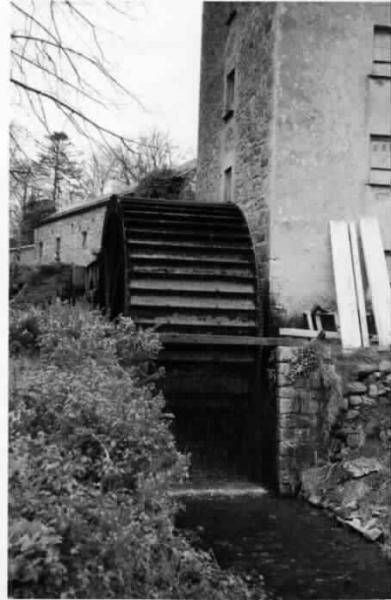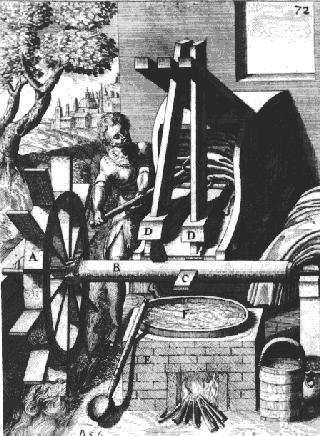Cistercians
Today, let's talk about monks and waterwheels. The University of Houston's College of Engineering presents this series about the machines that make our civilization run, and the people whose ingenuity created them.
The Cistercian monastic order was founded in the year 1098. By 1098 the waterwheel had just revolutionized Western Europe by providing a cheap and convenient power source. It had replaced the backbreaking labor of grinding grain, fulling wool, and sawing wood that had been the beginning and end of most people's lives.
When St. Bernard took over the order over 14 years later, he moved it in a direction that would complete the change of European civilization that the waterwheel had begun. You see, the Cistercians were a strict branch of the Benedictine order who fled worldly commerce to live "remote from the habitation of man." But under St. Bernard, they achieved this life by setting up an economic independence based on the highest technology of the day.
By the middle of the 12th century the Cistercians had reached the cutting edge of hydro-power and agricultural technology. A typical monastery straddled an artificial stream brought in through a canal. The stream ran through the monastery shops, living quarters, and refectories, providing power for milling, wood cutting, forging, and olive crushing. It also provided running water for cooking, washing, and bathing, and finally for sewage disposal.
These monasteries were, in reality, the best organized factories the world had ever seen. They were versatile and diversified. Of course, they represented a rather strange way of living "remote from the habitation of man," but that's another matter.
We're too often told that this period of history was a Dark Age. The reason is that the people who wrote Medieval political history were remote from the world of making things. The scribes of the kings wrote about armies and slaughter. They didn't devote much time to the engineers who were really changing the world.
And the engineers of the Cistercian order didn't just develop this new technology; they also spread it throughout Europe during the 12th and 13th centuries. Their 742 monasteries were major agents of changes that completely altered Medieval life.
I'm John Lienhard, at the University of Houston, where we're interested in the way inventive minds work.
(Theme music)
Gimpel, J., The Medieval Machine. New York: Penguin Books, 1976.
This Episode has been rewritten and updated as Episode 1311.

(Photo by John Lienhard)
A 19th-Century Waterwheel Still Grinding Grist in County Clare, Ireland

(Image courtesy of the University of Kentucky's Special Collections Library)
A 17th-century European fulling mill from Böckler's Theatre of New Machines,
probably quite similar to the Cistercian ones